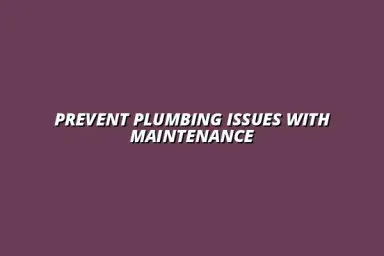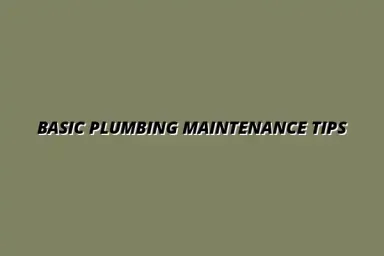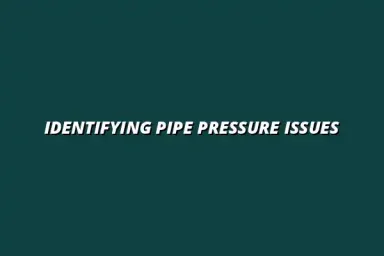Understanding Pipe Freezing and Its Consequences
When winter arrives, many homeowners face the daunting issue of pipe freezing. This phenomenon occurs when the temperature drops significantly, causing the water inside the pipes to freeze. Understanding the causes and consequences of frozen pipes is crucial for every homeowner to avoid costly repairs and damage.
Frozen pipes can lead to disastrous situations, including burst pipes and extensive water damage. When water freezes, it expands, creating immense pressure within the pipes. Eventually, this pressure can become too much, leading to a rupture, which could result in flooding or significant structural damage to the home. For help dealing with frozen pipes, check out this guide on dealing with frozen pipes.
What Causes Pipes to Freeze in Winter?
There are several factors that contribute to pipes freezing during the colder months. One major cause is low temperatures, which often dip below freezing, especially during nighttime. When the temperature falls, uninsulated or poorly insulated pipes can quickly succumb to the cold.
Another significant factor is the lack of heat in certain areas of the home. If a room is not adequately heated, pipes within that space are at a higher risk of freezing. Maintaining adequate heating throughout your home is crucial; for more information on this and other preventative measures, see these winter plumbing tips. Additionally, drafts from windows and doors can lower the temperature around pipes, making them more susceptible to ice formation.
- Extreme temperature drops
- Pipes located in unheated areas
- Air leaks and drafts
Impact of Low Temperatures on Plumbing
Low temperatures can severely impact plumbing systems. When temperatures drop below 32°F (0°C), the water inside pipes can freeze, leading to potential blockages and bursting. The effects of freezing can vary based on the pipe material; for instance, metal pipes are less forgiving than plastic pipes when it comes to expansion and contraction.
Moreover, if pipes freeze and remain unaddressed, the consequences can escalate quickly. A small crack or split can lead to significant leaks once the ice melts, resulting in costly repairs and potential damage to furniture, flooring, and electrical systems. Regular plumbing maintenance is essential to prevent such issues; learn more about essential plumbing maintenance.
Common Areas Prone to Pipe Freezing
Understanding where pipes are most at risk of freezing can help homeowners take preventive measures. Common areas that often face issues include:
- Basements and crawl spaces
- Attics and garages
- Exterior walls
- Under sinks in kitchens and bathrooms
These locations are typically less insulated and more exposed to the cold. Being aware of these vulnerable spots allows homeowners to focus their efforts on insulation and heating to protect their plumbing. For example, learn how to prevent freezing in your bathroom plumbing with these leak prevention tips.
Essential Steps for Preventing Pipe Freezing
Taking preventive action is essential to safeguard your plumbing system from the harsh winter conditions. Here are some key strategies every homeowner should consider:
- Use insulation techniques for pipes
- Maintain adequate heating throughout the home
- Implement preventive measures for outdoor plumbing
By understanding these preventive steps, you can effectively reduce the chances of experiencing frozen pipes and the associated consequences. Taking the time to prepare your home can save you from the stress and costs of dealing with plumbing emergencies. Learn more about preventing frozen pipes this winter and avoid costly repairs. Stay tuned for practical tips on insulation and heating in the following sections!
Addressing Common Questions About Pipe Freezing
What Temperature Should You Worry About for Pipe Freezing?
Many homeowners wonder at what temperature they should start to worry about their pipes freezing. Generally, pipes are at risk when temperatures drop below 32°F (0°C). However, it's not just the outside temperature that matters, but also factors like wind chill and where the pipes are located in your home.
For example, pipes that are in unheated interior spaces — like basements, attics, or crawl spaces — may freeze at temperatures above 32°F. This means it’s essential to monitor indoor temperatures in these areas, especially during cold snaps. Preventing your water heater from freezing is also crucial; find out how with these helpful maintenance tips.
- Keep an eye on the forecast: If temperatures are expected to drop significantly, take preventive measures.
- Consider local climate: Homes in colder regions should be especially vigilant, as the risk is higher.
- Check insulation quality: Well-insulated pipes are less likely to freeze, even in lower temperatures.
Can Pipe Freezing Cause Permanent Damage?
Yes, pipe freezing can definitely lead to permanent damage. When water inside pipes freezes, it expands, which can put immense pressure on the pipe material. This pressure can lead to cracks or even complete bursts, causing significant water damage when the pipe thaws.
Additionally, the aftermath of a frozen pipe can be costly, not just in terms of repairs but also in potential mold growth or structural damage from the water that escapes. Understanding the risks helps in taking better precautions! If you need a plumber in Birmingham, consider contacting a local professional like those listed on this plumber directory.
- Monitor for leaks: After thawing a frozen pipe, check for leaks to prevent further damage.
- Inspect the pipe material: Some materials are more prone to damage than others.
- Stay alert for unusual sounds: Popping or banging noises can indicate expanding ice inside pipes.
Summary of Preventive Measures and Final Thoughts
Key Takeaways for Homeowners
As we’ve learned, preventing pipe freezing is crucial for maintaining a healthy plumbing system. Here are some key takeaways:
- Keep indoor temperatures stable, especially in unheated areas.
- Insulate exposed pipes thoroughly to minimize risk.
- Prepare your outdoor plumbing for winter to avoid freeze damage.
Focusing on these preventive measures can go a long way in safeguarding your home from the repercussions of cold weather!
Encouragement to Implement Prevention Strategies
Don’t wait until a problem arises! Taking steps to prevent pipe freezing is far easier than dealing with the aftermath. Implementing these strategies can save you time, money, and stress.
Start checking your home for vulnerable spots and consider the insulation strategies discussed. Your future self will thank you for the effort! Remember, it’s always better to be proactive than reactive when it comes to protecting your plumbing.

 Kiran Almasi
Kiran Almasi

